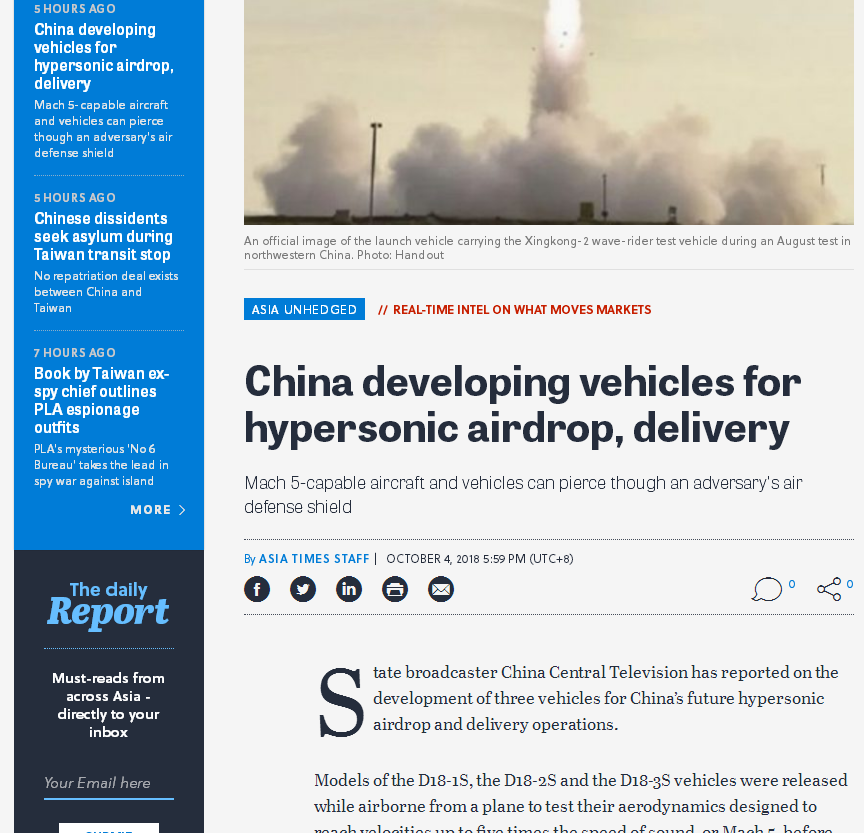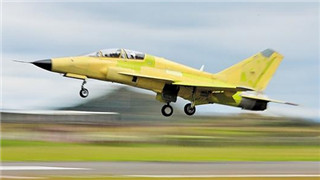
Source: atimes.com
State broadcaster China Central Television has reported on the development of three vehicles for China’s future hypersonic airdrop and delivery operations.
Models of the D18-1S, the D18-2S and the D18-3S vehicles were released while airborne from a plane to test their aerodynamics designed to reach velocities up to five times the speed of sound, or Mach 5, before reaching the ground.
The term “hypersonic” refers to capability to travel faster than Mach 5.
The test was conducted at the end of last month at the Jiuquan Satellite Launch Center in northwestern China’s Gansu province.
Researchers recorded data from each step of the experiment, from acceleration and breaking the sound barrier to parachute landing and recovery.
The three prototypes are modeled after the design of China’s indigenous fighters and they have the potential for non-military applications such as logistics and civil aviation, according to the news program.
As seen in the footage released by CCTV, one of the test aircraft sports a single vertical tail while another has two vertical tails and the third one has a pair of wings.
Having three prototypes can allow researchers to understand how different aerodynamic designs determine and affect a hypersonic vehicle’s speed, stability and maneuverability.
Boeing is also working on a conceptual hypersonic passenger plane dubbed Concorde 2.0, as well as its Mach 6-capable X-51A wave-rider.
In August China tested its first Xingkong-2 wave-rider hypersonic flight vehicle after it was catapulted into the skies by a heavy-lifting rocket.
The PLA Daily reported back then that with its high speed and variable trajectory, the vehicle could be launched from any rocket, carry nuclear warheads and break through any current-generation anti-missile defense system.
The developer of the wave-rider prototype, the China Academy of Aerospace Aerodynamics, claimed that the test vehicle – which it said had been in development for three years – was launched from an undisclosed facility in northwestern China and separated cleanly from the booster rocket after a 10-minute ascent and controlled transition, successfully engaging its own propulsion system to perform independent flight for more than 400 seconds, attaining a maximum speed of Mach 6 (98,425 km/h) and flight ceiling of 30 kilometers.
The internally funded demonstration was aimed at validating core technologies that are vital to hypersonic flight, with CAAA stating that the test vehicle was subsequently recovered in its complete state at a designated landing zone.
China has reportedly tested hypersonic aircraft in the past, but principally with hypersonic glide vehicles (HGVs) that were launched to high altitudes via booster rockets and then flown unpowered to their targets at hypersonic speeds, according to the Jane’s Defense Review.
Disclaimer: This article was originally produced and published by atimes.com. View the original article at atimes.com.












